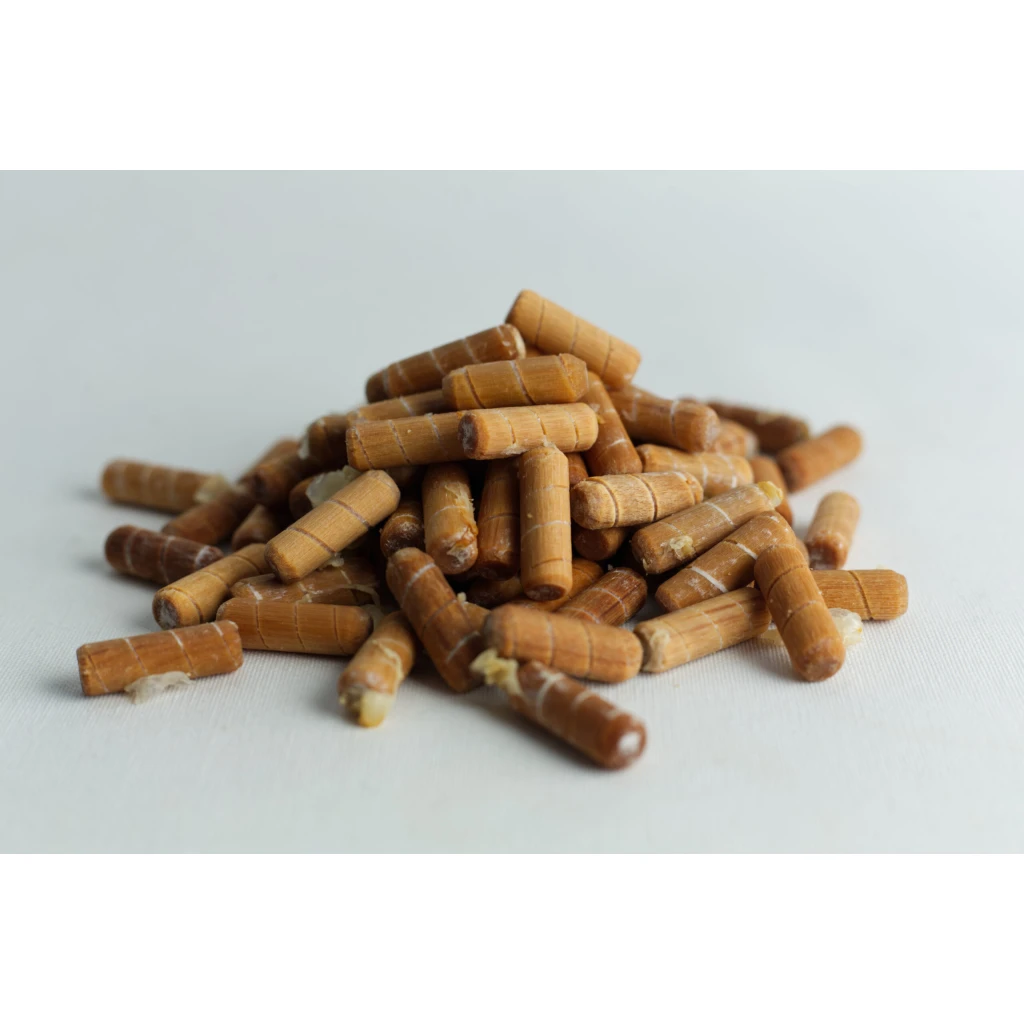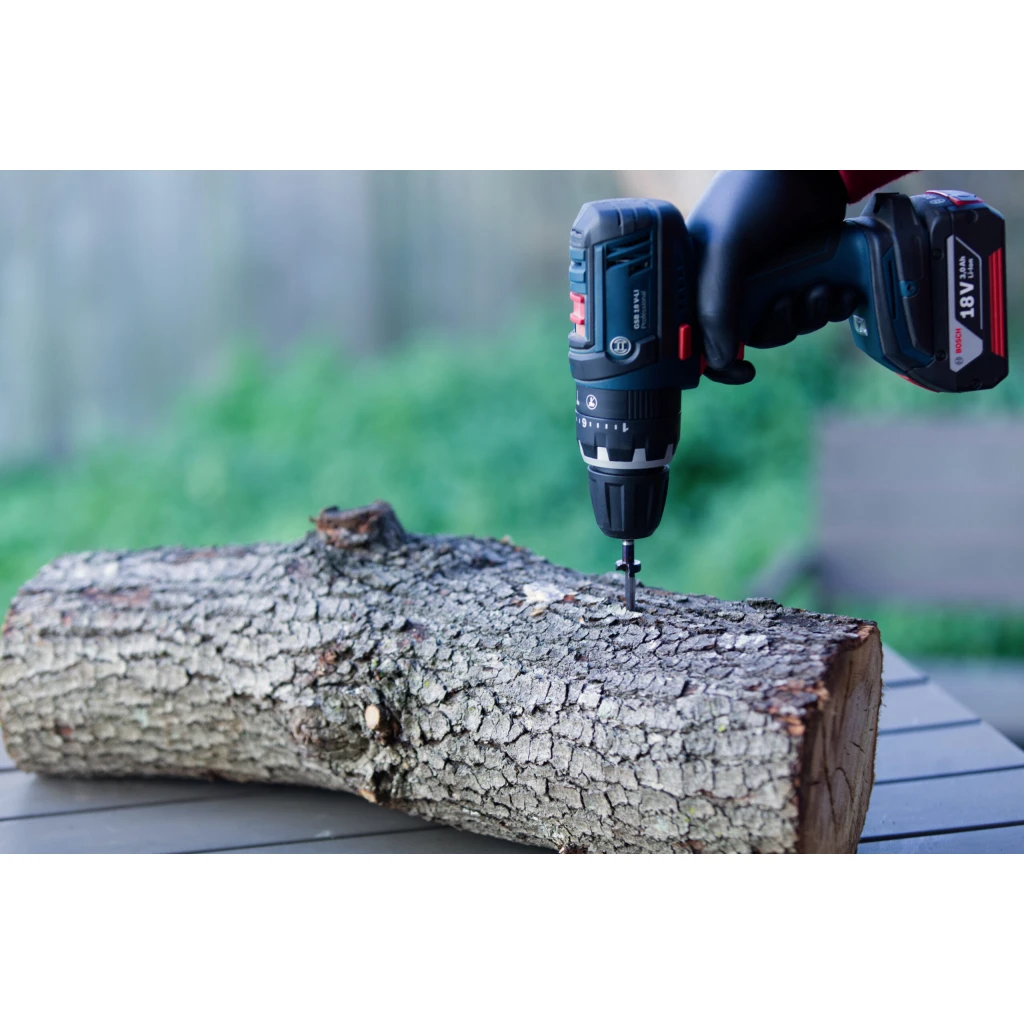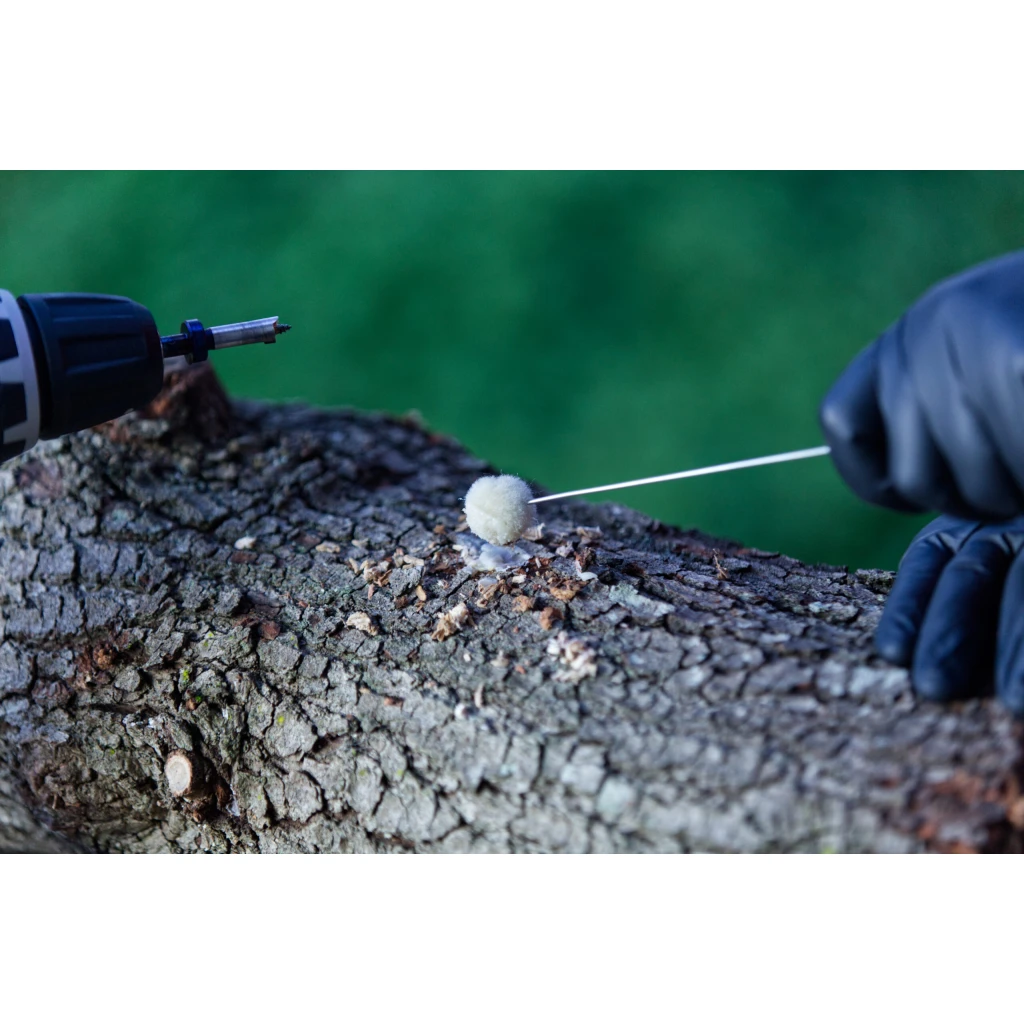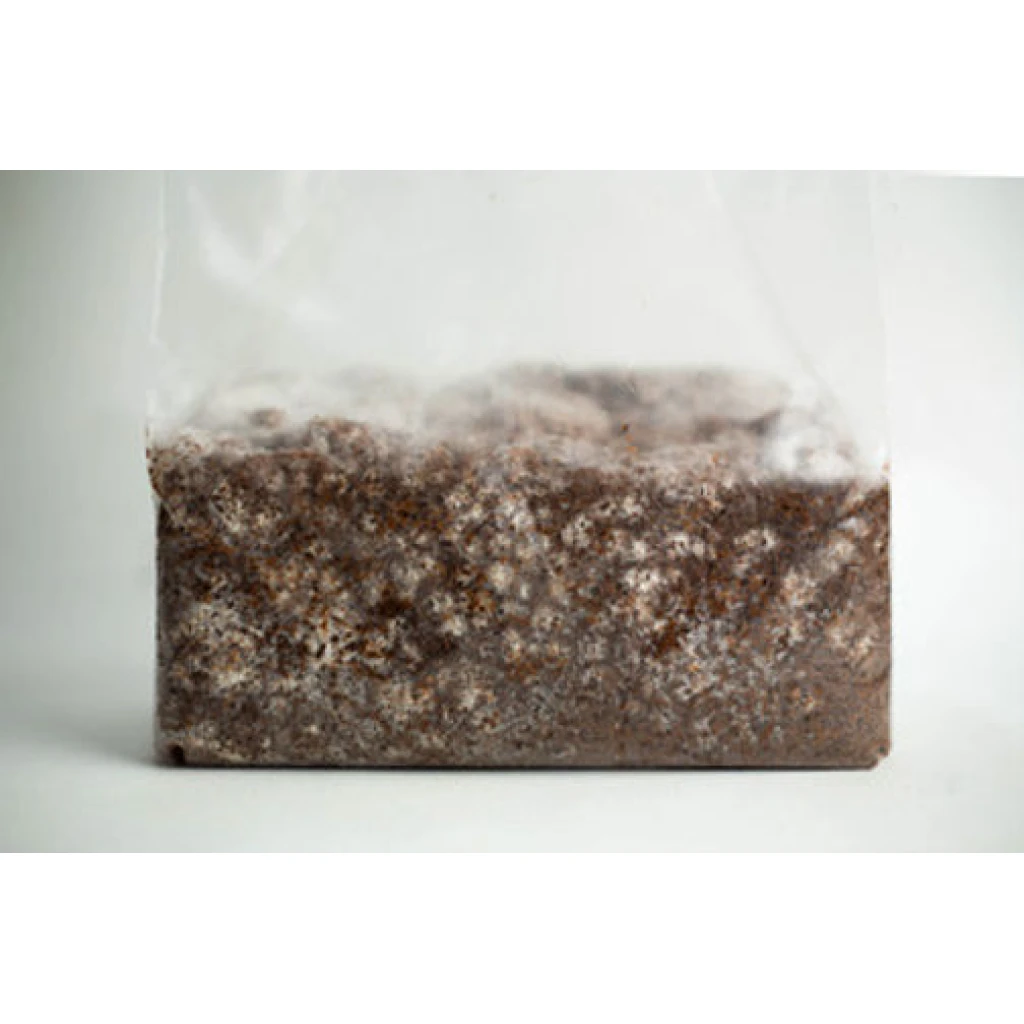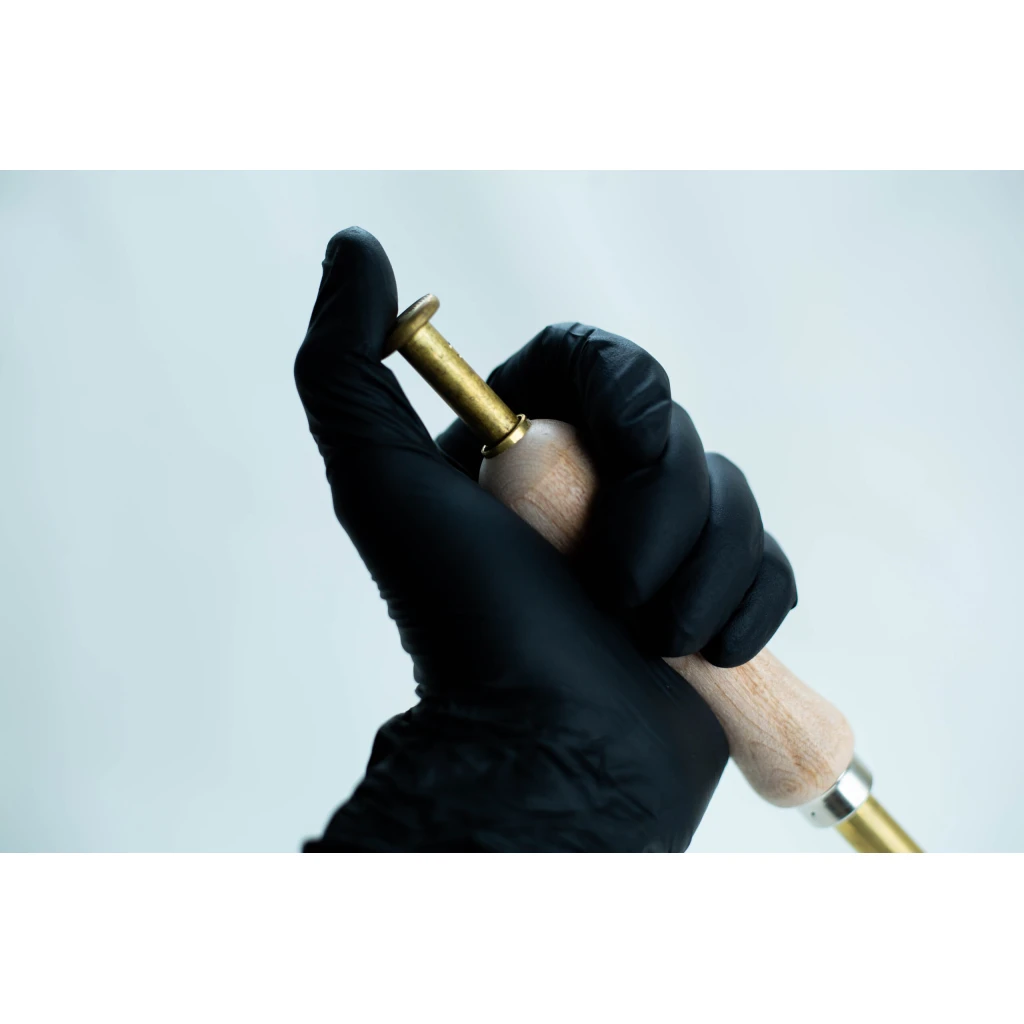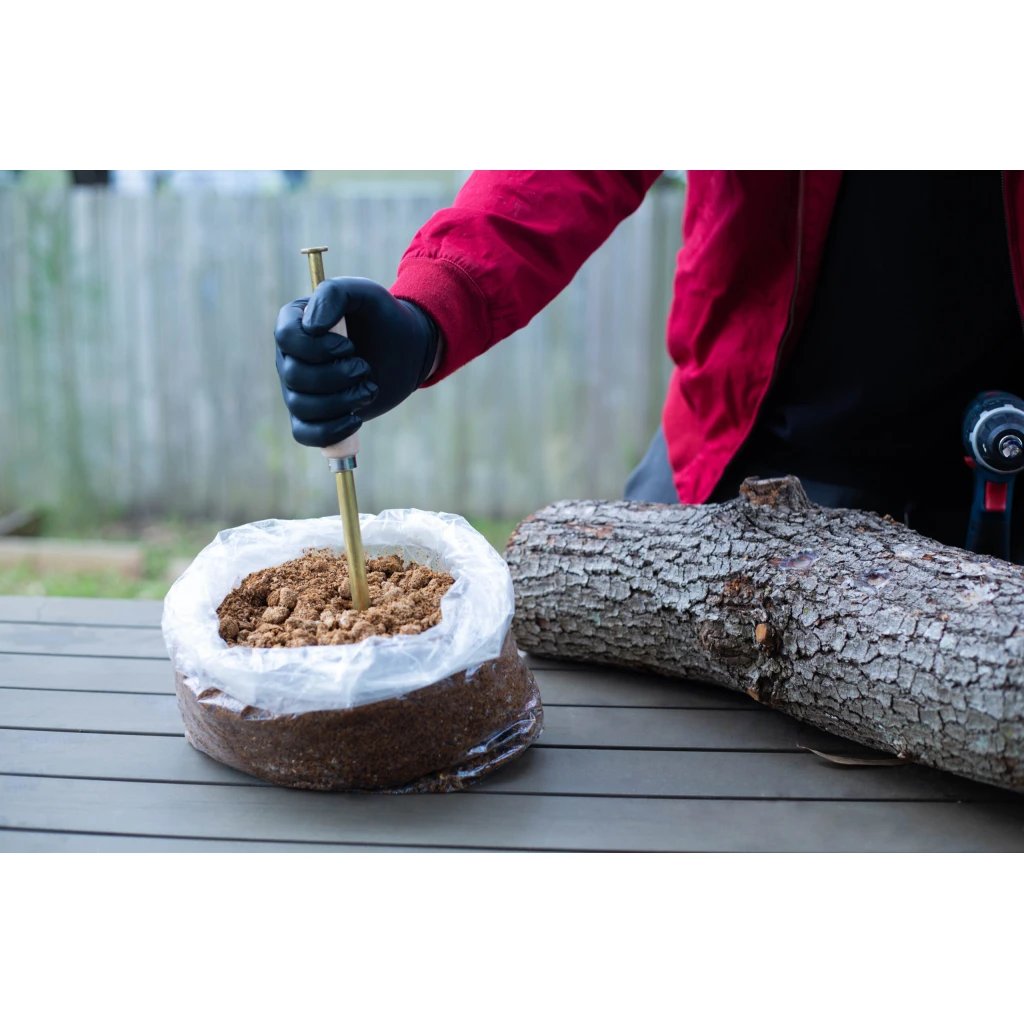Growing mushrooms on logs is a fulfilling and eco-friendly method for cultivating fungi, offering both environmental benefits and a fresh supply of mushrooms. This guide provides a comprehensive overview of the entire process, from choosing the right logs to harvesting your mushrooms, ensuring a successful cultivation experience. The article also covers selecting suitable tree species, what to look out for, necessary equipment, and instructions on making your own dowels if you have access to a sterilizer. We will explore two methods for inoculating your logs, each requiring different equipment.
Method 1: Using Dowels – Best for small quantities of logs
• Colonized hardwood dowels
• Spiral grooved design to protect mycelium during log insertion
• Prepared in high-quality cleanrooms and laboratory facilities
• Sealed in a filter patch bag to breathe and store for up to 2-3 months if not used immediately
• Required equipment: Log dowel inoculation kit or drill bit 8.5mm only, dauber only, beeswax only,drill bit angle grinder adapter (optional)
Method 2: Using Sawdust Spawn
• 3 kg sawdust in various options
• Prepared in high-quality cleanrooms and laboratory facilities
• Sealed in a filter patch bag to breathe and store for up to 2 months if not used immediately
• Required equipment: Sawdust log inoculation kit, sawdust tool only, 12.5mm drill bit only, dauber only, beeswax only.
Distinction between Hardwood and Softwood trees
Before we go in-depth, it is important to know that the distinction between hardwoods and softwoods isn’t based on the actual hardness of the wood; some hardwoods are softer than many softwoods. Instead, the classification is based on the botanical characteristics of the trees.
Suitable Wood Types for growing mushrooms on logs
Broad-leaved trees (hardwoods, angiosperms) are preferred over softwoods (gymnosperms). Hardwood and softwood trees differ significantly in their biological characteristics and suitability for mushroom cultivation.
Hardwood Trees (Angiosperms)
Hardwood trees, also known as angiosperms, produce seeds enclosed within fruits and have broad leaves. They are typically deciduous, shedding their leaves annually. Hardwoods grow more slowly than softwoods, resulting in denser, more durable wood. This category includes species like oak, beech, birch, maple, and alder. Role in Mushroom Cultivation Hardwoods are generally preferred for mushroom cultivation. The high lignin content in hardwoods makes them more susceptible to breakdown by mushroom mycelium, providing essential nutrients for growth. This leads to better yields and potentially enhances the flavor of the mushrooms.
Hardwood Varieties That Are Soft Hardwood:
- Balsa (Ochroma pyramidale): A very soft hardwood, though not native to Australia.
- Cottonwood (Populus deltoides): Lightweight and soft.
- Willow (Salix spp.): Soft and light, used in products like cricket bats.
- Aspen (Populus tremuloides): Soft hardwood used in making matches and paper.
- Silver Wattle (Acacia dealbata): A relatively soft Australian native hardwood.
- Blackwood (Acacia melanoxylon): Softer than many other Australian hardwoods.
- Basswood (Tilia americana): A soft hardwood, not native to Australia.
- Poplar (Populus spp.): A soft hardwood.
- Corkwood (Duboisia myoporoides): Known for its light and soft wood, used in various applications.
Soft hardwood trees like willow, poplar, basswood, and silver wattle can be used for growing mushrooms, but oysters are recommended due to their lesser nutritional demands compared to other varieties.
Softwood Trees (Gymnosperms)
Softwood trees are gymnosperms, meaning they produce seeds without an enclosing fruit, often in cones. These trees are typically evergreen, retaining their leaves year-round. Softwoods like pine, cedar, and redwood grow faster and are less dense than hardwoods. Challenges in Mushroom Cultivation Softwoods are generally less suitable for mushroom cultivation due to their lower lignin content and anti-rotting compounds, which can inhibit mycelium growth. These compounds reduce nutrient absorption efficiency, leading to slower colonization and lower yields. However, certain techniques, like conditioning (soaking and boiling) or blending softwoods with hardwoods, can enhance their suitability for mushroom growth. In summary, while both hardwoods and softwoods can be used for mushroom cultivation, hardwoods are typically more effective due to their composition and structure.
Components of Tree Structure
Bark, Sapwood, and heartwood are essential components of a tree’s structure, each serving distinct functions.
• Bark is the outermost layer of a tree, protecting against environmental threats such as moisture loss, temperature extremes, and pests. It consists of both the outer bark, which is made up of dead cells, and the inner bark, or phloem, which is responsible for transporting nutrients throughout the tree.
• Sapwood is the living, outermost layer of wood beneath the bark. It plays a crucial role in the tree’s physiology by conducting water and nutrients from the roots to the leaves. Sapwood is typically lighter in color and contains living cells that help in the storage and transport of energy reserves.
• Heartwood is the central, non-living part of the tree trunk. As the tree ages, the inner sapwood cells die and transform into heartwood, which provides structural support. Heartwood is often darker due to the accumulation of chemical compounds that make it more resistant to decay and insect attacks.
Log Selection and Preparation
• Hardwoods only: Oak, eucalyptus, beech, chestnut, wattle, maple, hickory, sweet gum, sycamore, alder, birch
• Avoid ironbark, camphor laurel, anti-rot varieties, and softwoods (e.g., pine, bottlebrush) or aromatic wood varieties.
• Avoid monocots like palm; they are neither hardwood nor softwood.
• Fruit trees are not the best producers of mushrooms.
• Avoid branches as they lack sufficient diameter, dry out quickly, and won’t produce much.
• Shiitake and other species like sapwood, not heartwood. Logs with substantial amounts of sapwood are ideal for shiitake or any other variety. Species like chicken of the woods and reishi can also digest heartwood.
• If using eucalyptus species or gums, they often shed bark during summer, so it’s best to wait until after this time. Eucalyptus spp. are best for growing shiitake.
• Small-diameter wood will colonize more quickly but will not produce for as many years and can dry out. Larger logs are heavy and hard to work with.
• Inoculate logs within a week or two of cutting them, allowing enough time for some antifungal properties in the wood to dissipate but not too long for the wood to dry out or other competitor fungi to take up residence.
• The best time to harvest is after winter in spring; autumn is also fine.
• Having bark on the wood is fine as it can protect from moisture loss, especially if you are living in a dry arid region.
Ideal Log Dimensions
• Diameter: 10-15 cm
• Length: 60-100 cm
Wood Condition
• Use freshly cut logs (within 2 weeks of felling) or as soon as possible.
• Older logs are fine but may dry out or get inhabited by competing fungi.
• Cut logs from healthy, living trees during the dormant season if possible. The dormant season ensures the tree has collected enough sugars to survive, which helps with an abundant mushroom harvest.
Inoculation Process – Dowel Technique
- Drill Holes
o Use our dowel drill bit 8.5 cm with a stopper.
o Create holes 5 cm apart in rows.
o Stagger rows in a diamond pattern.
o Keep a distance of at least 2.5 cm from log ends. - Insert Plug Spawn
o Place dowel in the hole and use a mallet to insert it. - Seal with Wax
o Use food-grade paraffin, beeswax, cheese wax, or soy wax.
o Cover inoculation sites and log ends (optional). Log ends are recommended if you live in a particularly dry region and the log size is large enough to make it worthwhile.
o Caution: Melted wax is flammable; follow safety precautions.
Quantity Recommendation Use 50 plugs for a log 10-15 cm wide and 100 cm long. More dowels mean faster colonization.
Inoculation Process – Using Sawdust
- Drill Holes
o Use our Sawdust drill bit 12.5 with a stopper.
o Create holes 5 cm apart in rows.
o Stagger rows in a diamond pattern.
o Keep a distance of at least 2.5 cm from log ends. - Prepare and Insert Sawdust Spawn
o Loosen the sawdust: Begin by loosening the sawdust spawn in its original bag or transferring some to a container if you are not using the whole bag at once.
o Load the Inoculation Tool: To fill the tool, repeatedly press it into the loose sawdust spawn until the chamber is full.
o Inoculate the Log: Align the tip of the tool with the pre-drilled hole in the log. Gently press down on the top of the tool to release the spawn into the hole. Add more spawn or remove excess if needed. - Seal with Wax
• Use food-grade paraffin, beeswax, cheese wax, or soy wax.
• Cover inoculation sites and log ends (optional). Log ends are recommended if you live in an arid region and the log size is large enough to make it worthwhile.
• Caution: Melted wax is flammable; follow safety precautions.
Post-Inoculation Care : Colonization
• Colonization duration: 6 months to 2 years, depending on species.
• Keep logs consistently moist; water regularly to support mycelium growth.
• Keep logs protected from sun and pests and wildlife.
Fruiting
• Begins when environmental conditions are suitable (temperature and humidity).
• Production lasts 3.5 to 7+ years, depending on variety, diameter of logs, length, watering, and temperature.
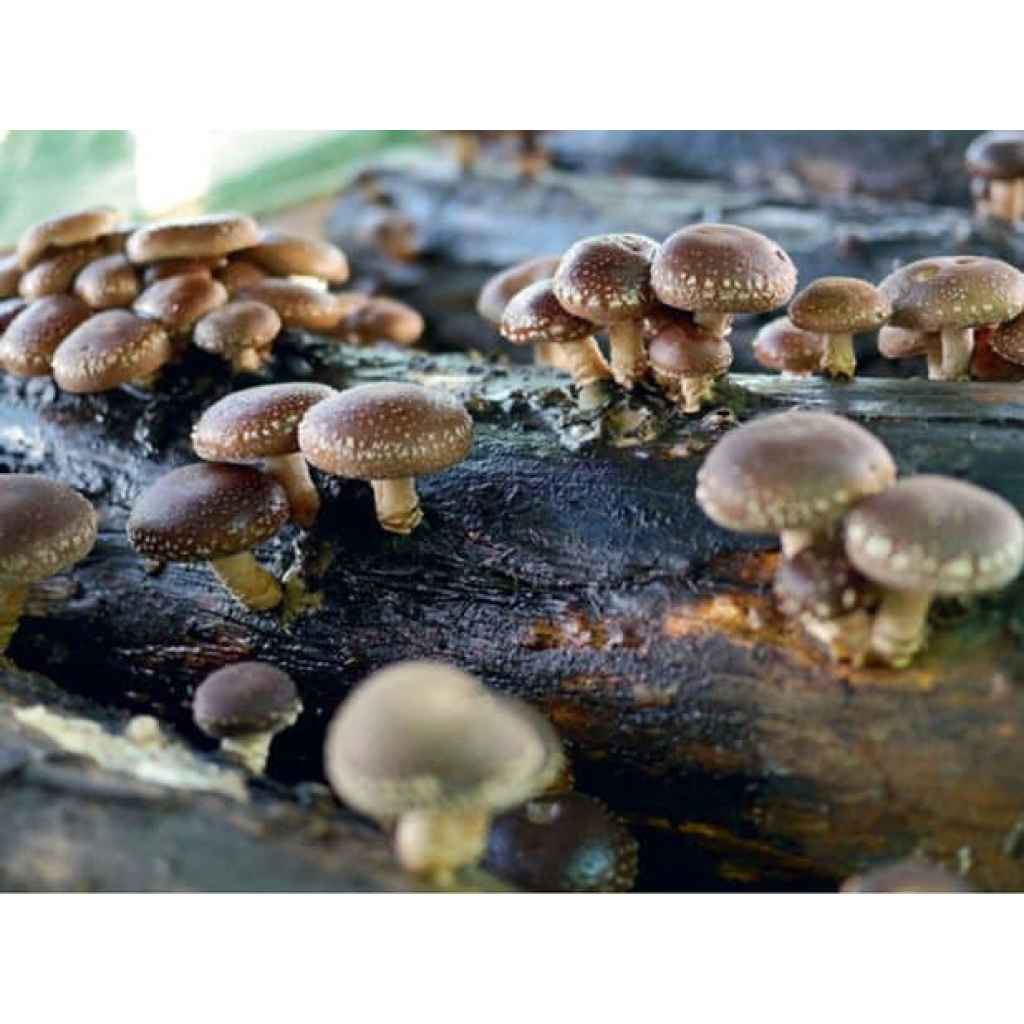
Harvest
• Properly identify mushrooms before consuming.
• Label each log with the variety inoculated and the date; this is essential and needs to be weather-resistant.
• Twist the entire cluster off the log for varieties like oysters that grow on logs.
• Harvest when the cap bends downwards; when they move upwards, the shelf life decreases drastically, they sporulate, and it affects texture, flavor, and susceptibility to wildlife damage.
Maintenance
• Maintain log moisture through regular watering or soaking and provide shade. Use our log blanket to protect from pests and sun.
Storage and Handling Unused Plug Spawn
• Store in the refrigerator, except for pink oyster and wood ear, which are cold-sensitive varieties that should be used immediately.
• Viable for 2-3 months when refrigerated; best if used within 2 months. Use our bag sealing clip to reseal the bag or use a heat sealer.
By following these detailed instructions, you can successfully inoculate logs with dowel plug spawn or sawdust and cultivate your chosen mushroom species. Maintain proper hygiene and follow safety precautions throughout the process. If you are unsure, contact us for guidance on specific log varieties.
Additional Information and Tips
• It is recommended to have a few logs with varying fruiting temperatures to get mushrooms year-round. Grow blue pearl oysters and lion’s mane in spring, winter, and autumn, and grow pink and yellow oyster and warm white oysters in summer.
• Remember, fruiting is not the same as inoculation (introducing the fungi to the logs). You can inoculate at any time of the year. Generally, they are inoculated after winter when you actually chop a tree down.
• You can inoculate all types of species at the same time, but they will fruit when the temperatures are favourable to them.
• Eucalyptus spp. is readily available in Australia and is recommended for use. Some people may experience stomach upset due to eucalyptus oils, but this is very rare. The majority of people are fine. Initially, only consume mushrooms in small quantities from eucalyptus logs, and if you do not notice discomfort, you can increase the quantity.
• More information is available in the FAQ section.
• Some articles online suggest that the wood needs to be cured for a few weeks before use, but this can be misleading. Use the logs as soon as possible. Keeping logs for a few weeks has some advantages like the dissipation of some anti-rot chemicals found on trees naturally, but waiting can also give time for competing fungi to start colonizing the log. If you do wish to wait or have no option but to wait, store the wood above ground after they have been chopped and cover them to minimize any competing fungi from getting into the logs.
• You can also grow mushrooms on stumps and decompose stumps naturally. More information is in the FAQ section.
• If your tree is still standing in the ground and is dead, do not inoculate it. We should never inoculate a diseased tree or dead tree that you do not know when it died, as they will have a lot of competing organisms that will prohibit the growth of mushrooms. It is best to chop the tree down to a manageable size before inoculating as they need to be stored away from the sun.
• Reishi mycelium gets really hard, it’s recommended to use them as soon as possible.
• Pink oysters and wood ears are cold-sensitive species and should not be grown in areas that get extremely low temperatures; if they do, please protect them by taking them indoors in cooler months.
• If you have access to acreage with lots of logs, growing mushrooms on logs is recommended. We receive many inquiries from people in cities wanting to grow on logs. This is fine, but it is important to understand that there are other ways of growing mushrooms, such as in buckets and bags, for people in urban areas. If you want to learn, contact an arborist in your area and ask for logs.
• Not all mushrooms can be grown on logs, only the wood-loving variety. All the dowel plug spawns we sell are wood-loving varieties. Some sawdust spawn we sell like wood blewits, wine caps, and morels can’t be grown on logs. There are people online who also sell dowels for varieties like wine caps. They use dowels because grain spawn gets eaten by birds, but dowels do not, ensuring mycelium has time to establish. We sell sawdust spawn for this reason, as unlike grain spawn, it does not get eaten by wildlife and is 10 times more efficient than dowels.
• Some logs are better than others for certain varieties. We do not have educational material on all tree species as there are so many, but experimenting is the best way to go. Don’t be afraid to try a wide range of species or ones not listed. There are still many combinations to be tried and learned from! You could get varying results in yield, but you may be surprised by the resilience of the fungi kingdom.
• Anti-rot trees: There are many tree varieties with antifungal properties that are resistant to fungi. It is best to check online for the tree species you have to ensure they are not anti-rot varieties. It is recommended to use trees that are not sprayed with pesticides and are sustainably harvested.
• Certain oyster mushrooms will grow on pine, but the yield will be very low.
• Some varieties react (fruit) to the sound of thunder or even when shocked by dropping them from a height, which can sometimes activate mushroom growth.
• We also sell unicolated dowels to grow mushrooms. Boil the dowels in a pot making sure you only fill less than half of the pot with water. Dowels will release some sap and water will get cloudy. You can change the water if it gets difficult to work with. When all dowels sink in the water is when you know they are hydrated and ready to be sterilized. Sterilize in a pressure cooker for 1.5 hours in a breathable mushroom bag. Once they cool down, use our grain spawn to inoculate the dowels. The most convenient option is to get multiple 100g packs. Do not inoculate dowels with liquid culture.
FAQs
[sp_easyaccordion id=”179662″]
Disclaimer
We take pride in providing accurate information, and if we’ve made an error, please let us know so we can correct it. We depend on our knowledgeable readers and experts to identify any oversights we may have made. Do not consume any mushrooms from outdoors unless you have properly identified them; there are many look-alikes.
Owner of Rootlab

